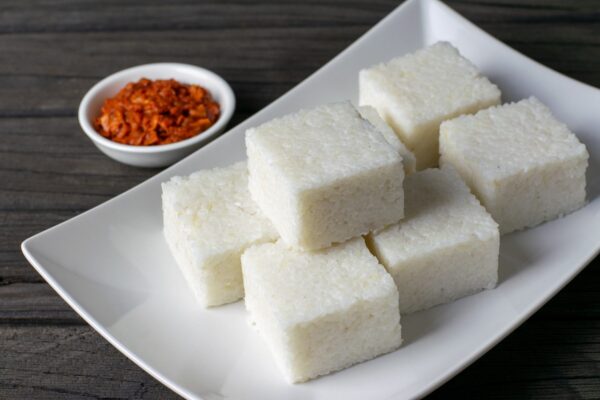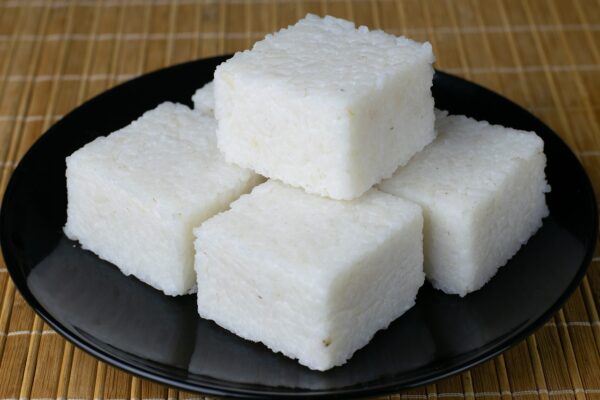Kiribath: The Quintessential Sri Lankan Milk Rice-by Kalani-eLanka

Kiribath, literally translating to “milk rice,” is a staple in Sri Lankan cuisine and an integral part of the island’s cultural heritage. This unique dish is made by cooking rice with coconut milk, resulting in a creamy and fragrant delicacy. Kiribath is traditionally prepared for auspicious occasions, such as New Year’s Day (both Sinhala and Tamil New Year), birthdays, weddings, and other celebrations.
The origins of Kiribath can be traced back to ancient Sri Lanka, where rice and coconut were abundant and essential components of the diet. The preparation of Kiribath is steeped in tradition and symbolism. It is often the first solid food given to infants during the weaning ceremony known as “Ata Pirikara,” symbolizing the beginning of a new phase in life.
Kiribath is also central to the Sinhala and Tamil New Year celebrations, known as “Avurudu.” It is prepared as the first meal of the new year, signifying prosperity and good fortune. The dish is typically accompanied by a variety of side dishes, including lunu miris (a spicy onion and chili relish), jaggery, bananas, and other traditional sweets.
Ingredients and Preparation
The simplicity of Kiribath’s ingredients is a testament to its humble origins. The primary ingredients are:
- Rice: Typically, white raw rice or a specific variety known as “Kekulu” rice is used.
- Coconut Milk: Freshly extracted coconut milk is preferred for its rich and authentic flavor.
- Salt: A pinch of salt enhances the overall taste.
Method
- Cooking the Rice: Begin by washing the rice thoroughly. Add the rice to a pot with water and cook until the rice is soft and the water is absorbed.
- Adding Coconut Milk: Once the rice is cooked, add the thick coconut milk and a pinch of salt. Stir well to combine.
- Simmering: Continue to cook the mixture on low heat, stirring occasionally, until the coconut milk is absorbed and the rice has a creamy consistency.
- Shaping: Transfer the Kiribath to a flat plate or a tray and spread it evenly. Traditionally, it is shaped into a rectangular or square block and cut into diamond or square shapes.
Serving Kiribath
Kiribath is usually served warm or at room temperature. The accompaniments vary based on regional preferences and personal tastes. Some popular pairings include:
- Lunu Miris: A fiery relish made with onions, dried red chilies, lime juice, and salt.
- Jaggery: Unrefined sugar made from palm sap, offering a sweet contrast to the creamy rice.
- Bananas: Fresh bananas are a common addition, adding a fruity sweetness to the meal.
- Other Sweets: Traditional sweets like Kavum (oil cakes) and Kokis (crispy rice flour cookies) are also enjoyed alongside Kiribath during festive occasions.

Kiribath is more than just a dish; it is a symbol of Sri Lankan culture and tradition. Its preparation and consumption are deeply rooted in the island’s history and reflect the values of simplicity, togetherness, and celebration. Whether enjoyed during a festive celebration or as a comforting meal, Kiribath remains a cherished part of Sri Lanka’s culinary heritage.







